2023
Centre for Distance-spanning Technology Annual Report

















































CDT’s mission is to accelerate digital innovations for sustainable impact, based on high quality scientific research.
WE CONNECT ACADEMIA, INDUSTRY AND SOCIETY AT LARGE IN RESEARCH, DESIGN AND INNOVATION, INCLUDING KNOWLEDGE TRANSFER PROCESSES
OUR PARTNERS ARE:
• Academia
• Developers, Suppliers and End-Users of Digital Infrastructure and Solutions
• Society
• Research and Innovation financiers
• Policy makers
CDT OPERATIONS ARE; RESEARCH, DESIGN AND INNOVATION INTEGRATION:
• Projects
• Proposals
• Experimentation
• Spin-off support
NETWORKING AND COLLABORATION
• External (e.g. ENoLL, Net World Europe, EARMA, IoT Forum, Swedish Datacenter Industry Association Swedsoft, BDVA, AIOTI, 6G 1A)
• LTU internal, partners (e.g. meeting with researchers, partner networking and events)
• Local: Luleå Business & Economic Development, IT Industry Association, IUC Norr, RISE SICS North AB, Luleå Science Park, Skellefteå Science City
• Experience of EU FP 4, 5, 6, 7, Horizon 2020 and Horizon Europe
KNOWLEDGE INTEGRATION AND COMMUNICATION
• Webinars
• Workshops
• Handbooks
• Courses
• Conferences
FUTURE FUNDING INFLUENCE
• Contribution to policies, roadmaps, lobbying, research agendas and programs
• Future studies
• Regional development plans

We are looking for new collaborations in the following areas with great challenges, change and impact.
Smart communities
• Digitalization in cities, regions, and rural areas
• Open data and Data-driven decision making
• Digital Inclusion
• Digital Healthcare and Welfare
• Digital cultural and creative solutions
Cloud and Edge Computing
• Cloud-to-Edge-to-IoT continuum
• Green, energy efficient, datacenters of the future
• Focus on sustainability, security, scalability, and smart algorithms
• Efficient distributed and software defined systems
Digitization for green transition
• Twin Transition - Green and Digital
• Green Traceability
• Smart Grids
• System demonstrators Communication
• Further development and tests around 5G Advanced and introduction of 6G
• Research around 6G
• Rural coverage
• Resilient networks
• Non-terrestrial networks and airspace
CDT offers an integrated environment of people, infrastructure, tools, processes and services for research, development, innovation and test.
CDT:
• Creates and develops partnerships
• Provides access to contacts/networks
• Initiates and runs collaboration projects regionally, nationally and internationally
• Develops and provides test beds and system demonstrators, e.g. in the field of 5G, 6G or Edge
• Accelerates new researchers/research topics with help in applications and projects
• Bridges cultures and works across borders regarding subject areas, organizations and national borders
• Influences funding programs, innovation and development strategies, and other forward-looking policies

Another year has come to an end, and it is time to summarise the activities of 2023. As usual, we at CDT have launched a number of new projects and started new collaborations in all areas, from digitalisation for green conversion, 5G, edge computing to digitalisation in the broadest sense. We organised several events and started to expand our 5G test environment together with our partners Ericsson and Telia. We also successfully completed a number of projects over the course of the year.
During 2024, there will be changes in the management of
CDT, as I will be leaving the role of CEO for a position as professor and head of subject for the newly launched research subject Cybersecurity at Luleå University of Technology. I would therefore like to take this opportunity to thank everyone for the good co-operation over the years. I have learnt so much while serving at CDT and will miss the truly collaborative environment we have.
Luleå and Skellefteå, January 2024 Karl Andersson, CEO
AnotTekniksprånget is an internship programme where Sweden’s employers invest in collaboration with the government to secure the country’s future skills supply by attracting more young people into advanced technical education. The programme is run by the Royal Swedish Academy of Engineering Sciences, IVA. During the autumn, CDT has supervised three interns who had the opportunity to work on projects and gain an insight into the variety of educational opportunities at Luleå University of Technology. The university hosts interns in its departments
every year, and the chair of the Tekniksprånget steering group is LTU’s principal Birgitta Bervall Kåreborn.
Gabriel Antonsson was one of the participants and he says:
- Before the internship I lived in Norrköping, so it was quite a long move with lots of new experiences. Among other things, I worked on compiling data for scientific articles as part of a research project. My advice to future participants is to dare to take the initiative and get in touch with people to share information that you find interesting.


Seminar on community masts and increased inclusion in the connected Sweden, gathered participants from all over the country. The seminar addressed both technical and economic aspects as well as the needs of end users in rural areas and archipelagos and the importance of mobile coverage for rescue operations. It was organized by the Vinnova-funded project Rural ICT Testbed - #full coverage in connection with Västerbotten on Grand.

During the Vinnova Meeting “Mötesplats Avancerad Digitalisering”, the Ambassador of the Year for Advanced Digitization 2023 was awarded. The award went to Catharina Lindholmen, Saab and Karl Andersson, Professor, Dean and Director of CDT at Luleå University of Technology. Karl Andersson would like to take this opportunity to thank all partners and collaborators who have made a crucial contribution to our projects with excellent achievements and helped with the important work of disseminating the results.


Arctic 6G is an Interreg Aurora project aiming to support the future 6G network to improve societal resilience in the rural Aurora region. During the year, the project has met in Tornio, Finland, and Luleå with partners University of Oulu, Lapland University of Applied Sciences and Luleå University of Technology. Read more about the project at www.arctic6g.eu

In August, the 5G Edge Innovations for Mining project met for its 10th workshop at the Skellefteå campus. Representatives from Luleå University of Technology, Ericsson, Hexatronic, BI NORDIC, ThingWave and RISE were present to discuss progress and make plans for the important upcoming demonstrations where we will showcase a number of key applications in a real mining environment. Read more at: https://5gedgeinnovations.se

We had the honour of being visited by the Minister of Energy and Industry - also Deputy Prime Minister - Ebba Busch. During the visit, the parties of the Vinnova-funded project Digital Urban Development - Skellefteå Campus had the opportunity to present the work on how we are developing future flexibility solutions, where the goal is to curtail electricity peaks and exploit the possibilities of large-scale energy storage and the use of smart algorithms.

On 7 September, Rosa Damato, Member of the European Parliament, and three members of her team visited CDT and Luleå University of Technology to explore our role in the green transformation. LTU is known for its close collaboration with industry and our research contributes to solving challenges related to the energy transition.
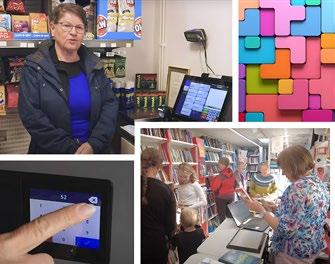


As part of our ongoing commitment to the digitalisation of rural areas, we have organised impactful events to inspire, inform and promote collaboration, for example in digital hubs and service buses in the project SMALL.

On Thursday 15 June 2023, the Data Week conference ended with an exciting visit to the 5G test bed at Luleå University of Technology. European AI experts attended and had the opportunity to see experiments and demonstrations within the 5G test network. The event, organised by Luleå University of Technology and Ericsson, provided valuable insights and interesting presentations.

Green Transition North is a new project at Luleå University of Technology that covers several research areas, including IT and the circular economy. The university is now looking for 15 PhD students from around the world for the project, an unusually large investment.

The Arctic Challenge Hackathon 2023 took place over three days in November at the Skellefteå Campus. The participants were LTU Master’s students working together on challenges in the areas of 5G, digital twins and more.

In November, Michael Nilsson, CDT, represented CH2ESS at the 2023 European Hydrogen Week, which took place over four days in Brussels. This event served as a focal point for stakeholders in the hydrogen value chain and provided a platform for exhibitions, panel discussions and networking opportunities. The exhibition area featured over 200 exhibitors and discussions with 200 speakers, including representatives from international partners such as Brazil and South Africa. The diverse range of innovative products, projects and plans presented at the event emphasised the dynamic and collaborative nature of the hydrogen industry.


On 2 June 2023, around fifty participants gathered to kick off the Green Transition North project. During the launch event, participants heard exciting presentations from LKAB, H2 Green Steel, Skellefteå Municipality and Luleå City Council, as well as presentations from the 13 sub-projects.



P4 Norrbotten reported on the conference “The Future of Circular Food Production”,” which looked at current strategies for land-based fish farming and insect farming and emphasised the role of new technologies in turning these visions into reality. The main objective is to develop technologies that enable fish farming and vegetable cultivation in a circular and environmentally friendly system. The focus here is on the recycling of residual products in closed cycles. In addition, there are concerted efforts to integrate insect and microalgae farming to create a more sustainable fish feed compared to conventional practises. The microalgae, which are rich in omega-3 fatty acids, fulfil the fish’s need for this essential nutrient as they do not produce it themselves. The initiative is known as Intelligent Food Production Systems (IFPS) and is funded by Formas.


Rock bolts are used in mines around the world to stabilise walls and roofs. One of the problems is that damage and stresses on rock bolts are difficult to detect and collapses can lead to huge production losses and, in the worst cases, fatalities. With smart rock bolts from CDT’s partner ThingWave, mining companies can detect changes in the rock in time and take action before an accident occurs.
On 15 February, ThingWave participated with Ericsson in the high-level Swedish-Australian Sustainable Mining Summit organised by Business Sweden. There, the rock bolts were presented to Crown Princess Victoria and Prince Daniel, among others.

Michael Nilsson, CDT, presenting at the 5G Techritory conference
CDT’s Michael Nilsson spoke at the 5G Techritory on 18 and 19 October 2023

Meeting as part of the joint project VISA/5G, funded by Vinnova as part of the Advanced Digitisation programme. We focus on vendor-independent 5G-connected substations, combining the latest from IT and the telecom and energy sectors with cutting-edge research from Luleå University of Technology. Partners Vattenfall, Hitachi Energy, Telia, Ericsson, Metrum and IETV contribute with their industry knowledge and technical expertise. Read more about the project at visa5g.se

LTU’s machine learning group, in collaboration with CDT and the company Smartplanes, has developed technology to detect snow-covered cars from a height of more than 250 metres.

Luleå University of Technology has received SEK 58 million by Tillväxtverket, the Swedish Agency for Economic and Regional Growth, and other funders for two major green transition projects, Green Transition North – smart energy systems and Green Transition North – circular economy. The projects take place in close cooperation with industry in the context of the green transition and, importantly, with small and medium-sized enterprises in northern Sweden.
“It is great that we have received funding for these projects, which will be of great importance for the green transition. The projects focus on the circular economy and smart energy systems,” says Karl Andersson, Professor of Pervasive and Mobile Computing at Luleå University of Technology.
The two projects are a collaboration between researchers and 15 green industry companies in northern Sweden: LKAB, Northvolt, H2 Green Steel, Uniper, ABB, Hitachi Energy, Skellefteå Kraft, PiteEnergi, Luleå Energi, Bodens Energi, Vattenfall, Ericsson, Hexatronic, AFRY, and Lumire. The Green Transition North –Smart Energy Systems project is about, among other things, modern flexibility solutions and new principles for managing hydropower. Green Transition North – Circular Economy is about, among other things, digital product passports, i.e., sustainability data that enable circular products and business models, but also about the 6G-connected industry of the future, more sustainability through modularisation of products and circular business models. An important part of
the two projects is to involve the small and medium-sized enterprises in the region and to create the conditions for this target group to take on the challenges of the green industrial change even better.
LTU Business, Boden’s development, IUC Norr and Skellefteå Science City are also participating in the projects to secure the important link to the region’s small and medium-sized enterprises. The European Regional Development Fund contributes 40 per cent of the total budget, with the remainder coming from the Norrbotten Region, Skellefteå Municipality, Luleå University of Technology and the participating industrial companies.
Luleå University of Technology plans to recruit 15 PhD students within the research initiatives Creaternity, SUN and the Arctic Centre of Energy (ACE) for the two projects. The PhD students will work closely with the participating companies and the small and medium-sized enterprises that join the projects.

We interviewed Amin Moosavi, PhD student in fluid mechanics at Luleå University of Technology, about Green Transition North’s sub-project 5 “Optimised power storage in mobile battery units”, which addresses key challenges in battery storage, including safety, cost, lifetime, limited energy density and environmental impact. In particular, the project aims to improve the thermal management of batteries in mobile applications.
Lithium batteries have become the focus of attention due to the increasing global demand for electric vehicles and mobile applications. The advantages of lithium batteries include higher energy density, specific energy, compactness, lower self-discharge and fast charging capability, making them ideal for energy storage in mobile applications.
The research project aims to answer four main questions. These include understanding the thermal behaviour of lithium battery cells, investigating the thermo-fluid behaviour of battery cooling systems, evaluating the expected thermal performance of the cooling system and improving the thermal performance of the system to increase efficiency and reliability.
The research aims to develop a high-performance, cost-effective battery cooling system that takes into account safety aspects, cost considerations, energy density constraints and environmental impacts. Computer models will also be developed to enable further investigation and optimisation of mobile battery units, contributing to advances in the field of electromobility.
A major challenge is the large computational domain of the thermal management system of batteries. To overcome this, techniques need to be
developed to split the model into sub-models to reduce computational costs and still obtain reliable results.
Optimised storage of electricity in mobile battery units benefits industry and society by increasing safety, reducing costs, extending battery life and reducing waste generation. It enables electric vehicles to become more economical and accessible, while supporting the transition to a greener transport system.
Discussions have started with Northvolt AB about a possible industrial implementation of the research results. Practical applications go beyond the automotive sector and benefit companies involved in the electrification of boats and aircraft.
The project contributes to the general understanding and further development of battery technologies by providing a simulation model for battery packs. This enables in-depth analysis, optimisation of design and operation and serves as a valuable tool for future research and development in this field.

We interviewed Emelie Berglund, PhD student in Electronic Systems at Luleå University of Technology, about Green Transition North’s sub-project 2 “Development of active filters for EMC”,” which is about reducing electromagnetic interference (EMC) in electric drive systems. Power electronic systems generate interference, and the goal is to develop small, energy-efficient, and integrated filters for electrified transport systems.
What research questions have you chosen?
Our research questions aim to find methods to reduce electromagnetic interference generated in electrical drive systems. Active channelling philtres are the focus in order to eliminate interference that can lead to electromagnetic emissions, but also to hardware damage.
Why did you focus on this topic?
In the past, passive filters have been used to suppress electrical interference. The problem with passive filters is that they take up large areas and can greatly increase the weight of the system. In electric vehicles, for example, weight is a very important aspect because it correlates strongly with the battery capacity, which determines how far you can drive on one charge. To solve this problem and at the same time fulfil the purpose of inhibiting interference, active (cancellation) filters have become a topic of research.
Can you explain what electromagnetic compatibility (EMC) is and why it is a problem in electric drive systems?
Electromagnetic compatibility (EMC) describes the electromagnetic nature of an electronic device. An EMC analysis examines, among other things, how the electromagnetic interference
of the electronic device affects its own system and other adjacent electronic systems. It also examines how susceptible the device is to external electromagnetic interference, such as a lightning strike. In general, electronic devices with high switching frequencies, such as the drive system of an electric motor, cause electromagnetic emissions that can potentially further interfere not only with its own system but also with other nearby electronic systems. In industry, there is a need to reduce bearing damage, to which bearing currents contribute. Some types of bearing currents are generated by the electric drive system and can be eliminated by active channeling filters.
What is the difference between passive filters and active filters when it comes to managing EMC?
As mentioned earlier, when working with low frequencies and high powers, it is better to avoid passive filters as they can be very large. Therefore, active filters are considered as an alternative solution to reduce filter size. The challenges are size and the fact that passive filters can quickly become bulky when working with low frequencies and high power levels. Active filters can help reduce the filter size.
What results do you hope to achieve?
By designing and building active channelization
filters, we hope to eventually suppress interference to the point where it does not affect the system itself or adjacent systems.
Can you say something about possible challenges and obstacles?
The challenge is to design, develop and implement high active channelization filters that are efficient enough to eliminate interference.
What are the potential benefits for industry and society?
The more society becomes electrified; the more potential sources of electromagnetic interference will arise. It is important that electronics work within their own system and with other systems, but also that they are not susceptible to interference. For an electrified society to function, the electronics must work.
Otherwise, what could happen in the worst case?
There are EMC problems that become a cost issue, such as bearing damage to electric motors caused by bearing currents. But there are also cases where electromagnetic interference has caused major problems, such as a car’s ABS system being disrupted by a mobile phone in the car, causing the brakes to stop working. For an electrified society to function and be safe, the electronics must work.
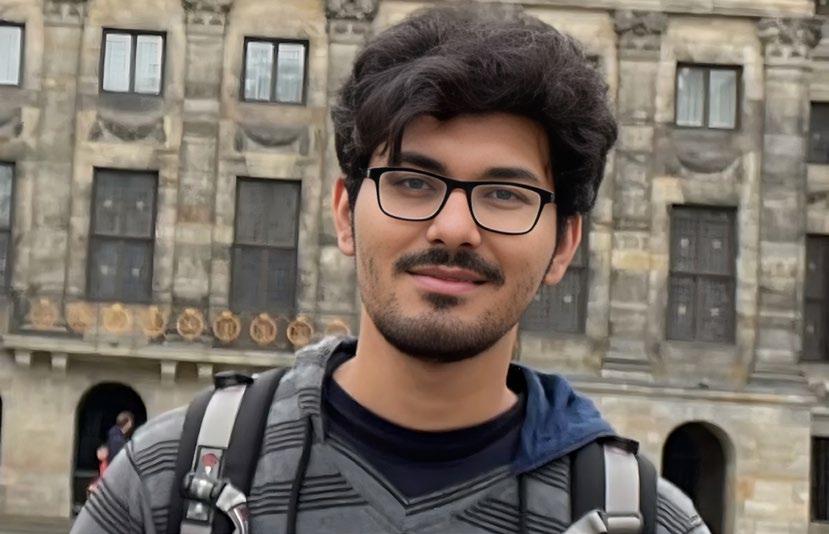
We had the opportunity to interview Mohammad Newaj Jamil, a PhD student specialising in Pervasive and Mobile Computing at Luleå University of Technology. He gave us insights into Green Transition North’s sub-project 11, “Sensor Fusion and Data Analysis”, which focuses on improving the recovery process of black pulp from lithium batteries through hydrometallurgy.
Can you tell us more about the sub-project and what goals you are pursuing with your work?
The main objective of this sub-project is to investigate and develop concepts, frameworks and prototypes that use distributed systems for monitoring, data collection, and control of industrial processes. Our focus is on making the control of processes more flexible, powerful and programmable. This includes implementing seamless failover, device replacement and avoiding technology lock-in, which is in line with the dynamic vision of a cutting-edge industry transitioning towards green technologies.
Sensor fusion sounds like a complex concept. Could you explain it in more detail?
Sensor fusion is a technique that combines data from multiple physical sensors to provide more reliable information, even if individual sensors are not completely reliable. This process minimises uncertainty and improves the overall performance of the task.
How is your research in line with sustainable development and environmental sustainability?
Sensor fusion and data analytics are integral to many artificial intelligence (AI) applications, such as robotics, autonomous vehicles, smart cities and the Internet of Things (IoT). The use of AI in various industries helps to build resilient infrastructure, promote inclusive and sustainable industrialisation and drive innovation. Therefore, this research is in line with Sustainable Development Goal (SDG) 9: Industry, Innovation and Infrastructure.
How do you think the advances in sensor technology and data analytics that you are researching in this project could impact the future of industrial processes?
This project will significantly influence the future of industrial processes in the following ways:
1. The integration of heterogeneous devices in plants and in the field, each with different design features and onboard functions to monitor and control industrial processes.
2. Implementing distributed operation and software updates without being locked into vendor-specific devices and software.
3. Achieve effective and efficient data analytics in the edge-cloud continuum.
Can you give us some insight into your background and the path that led you to this area?
My educational path started with a Bachelor’s degree in Computer Science and Engineering. I then completed an Erasmus Mundus Joint Masters Degree in Green Networking and Cloud Computing, which focused on assessing the environmental impact of ICT and optimising resource use in ICT. After completing my Master’s degree, I felt inspired to contribute to green change and sustainable development.
How long have you lived in Sweden and what is your overall impression of life here?
I have been living in Sweden for about one and a half years. My experience of life here has been quite good.
On 3 May 2023, several events on cybersecurity and disinformation were held in partnership with the US Embassy in Stockholm. The organiser was the Vinnova-funded project #fulltäckning - Rural ICT Testbed at Luleå University of Technology.
The events included both a round table discussion with local and regional stakeholders and two open lectures attended by over 100 people, both students and companies.
Speakers Bob Jensen and Mark Pfeifle shared the latest risk, crisis and resilience strategies against increasing disinformation and cyber threats. Jensen, who previously served as spokesperson for the White House National Security Council, emphasised that Sweden’s high trust in the national media and strong democracy are key to resilience against disinformation. Pfeifle, who previously served as deputy assistant to the president and deputy national security adviser for strategic communications, stressed the importance of identifying organisational risks and having a plan for how to act and communicate in crises.
During the event, many interesting questions were asked from the audience, including whether to stop using social media such as Twitter. The response from Jensen and Pfeifle was that we should all think about why we use different social media and be aware that we are sharing our personal information for the financial, political or other benefit of others. They also pointed out that municipalities and other stakeholders should work together to strengthen legislation on the use of individuals’ data.
The event was very well received and we would like to thank everyone for the insightful discussions and of course our speakers Bob Jensen and Mark Pfeifle.

In 2023, CDT has seen a record number of funded PhD projects. Over the course of the year, numerous PhD students received funding for their main projects through CDT. Here you can find details of some of these projects and their respective research areas.






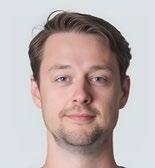
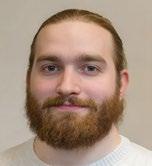
a particular focus on the optimised storage of electricity in mobile battery units.

Christoffer Alenius
PhD student in the Green Transition North project, specialises in energy science, with a particular focus on energy-efficient cultivation.

Hafiz Zubyrul Kazme
PhD student in the VISA/5G project, specialises in Electric Power Engineering.

Niklas Dahlquist PhD student in the 5G Edge Innovations for Mining project, specialises in Robotics and Artificial Intelligence.

Emad Farouk Ibrahim PhD student in the Wireless Innovation Arena project, specialising in Signal Processing.

Melina Sattelmeier
PhD student in the Green Transition North project, specialising in fluid mechanics, with a particular focus on the optimised storage of electricity.

Nikolai Galkin
PhD student in the VISA/5G project, specialises in Dependable Communication and Computation Systems.

Emelie Berglund
PhD student in the Green Transition North project, specialises in electronic systems, with a particular focus on the development of active philtres for EMC.

Mohammad Newaj Jamil PhD student in the Green Transition North project, specialises in pervasive and mobile computing, with a particular focus on sensor fusion and data analytics.

Oluwatosin Adewumi
PhD student in the Applied AI DIH North project, specialises in Machine Learning.

Faryal Junaid PhD student in the Arctic 6G project, specialising in Signal Processing.

Morteza Alizadeh PhD student in the DIT4Bears project, specialises in Computer Science.

Oskar Wintercorn PhD student in the Applied AI DIH North project, specialises in CyberPhysical Systems.

Prakash Chandra Chhipa PhD student in the Applied AI DIH North project, specialises in Machine Learning.

Sana Al-Azzawi PhD student in the Intelligent Food Production Systems project, specialises in Machine Learning.

Richa Upadhyay PhD student in the Applied AI DIH North project, specialises in Machine Learning.

Simon Andersson PhD student in the Bioblock project, specialises in Information systems.

Nurun Nahar PhD student in the Arctic 6G project, specialises in Pervasive and Mobile Computing.

Simon Johnsson PhD student in the Green Transition North project, specialising in Signal Processing.

Salman Javed PhD student in the Applied AI DIH North project, specialises in CyberPhysical Systems.

Sreelakshmi Vattaparambil Sudarsan PhD student in the Applied AI DIH North project, specialises in Embedded Intelligent Systems.
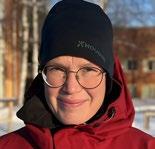
Linda Sandgren, PhD student in the Green Transition North project, specialises in machine design, with a particular focus on modularisation for the circular economy.

Sami Kabir PhD student in the Digital Urban Development project, specialises in Pervasive and Mobile Computing.

Yomn Elmistikawy PhD student in the WIA project, specialises in Information systems.

A tour with an electric wheel loader was conducted by the TRE-m project, where the autotesting facilities are hosting a demonstration to give representatives from the business community and test municipalities a first opportunity to see and drive the tractor.
In recent years, the test facilities in the winter test region have developed charging infrastructure on behalf of customers that goes far beyond what is publicly available in Norrbotten. Initially, to meet the need for charging stations for passenger cars. But recently, rechargeable trucks have also been tested in various facilities. Development is now progressing rapidly. For example, AB Volvo has announced a major restructuring of its model range, including what we usually call “yellow machines”. Against this background, SPGA (Swedish Proving Ground Association) has organised an electric tractor expedition together with Swecon. This is a tour with an electric wheel loader, where the auto test facilities will host a demonstration and where representatives from the business community and test communities will have a first opportunity to see and test drive the tractor.
- An exciting development, says Michael Lindeman of Icemakers. We have already set up the charging infrastructure.
The expedition started at the Arctic Falls test facility in Piteå. Fredrik Askling from Swecon gave an introductory talk in which he made us understand that the diesel engine’s best days are behind us. In addition to the electric wheel loader, which was also shown in Arvidsjaur, Slagnäs and Arjeplog in the further course of the expedition, an electric mini excavator was also available for viewing and test driving. Markus Samuelsson from Arctic Falls comments.
- It is really quiet and has fantastic comfort.
Fredrik Askling reports on others’ experiences of the working environment aspects, with a field test perspective, saying:
- When you come home after work, you are not as tired as before. This is of
course related to much less shaking and vibrations, but just the fact that you do not have to shout to be heard when someone is standing next to you and needs to think makes for a working environment on a whole different level.
At the second stop, in Arvidsjaur, Icemakers acted as hosts. This was followed by a demonstration in Slagnäs in Tjintokk and finally a group of people from Arjeplog were able to hear and feel the machine on site in Colmis. Many of the guests naturally wondered how long the batteries would last. Per Gyllenberg from Colmis explains.
- The battery can be expected to last a normal working day. An operating time of 3.5 hours may not sound much. But you have time to recharge the batteries during the lunch break and, above all, we are talking about efficient operating time. When the driver stands still with the machine and waits for others to do their part, he is not consuming energy. And that’s just the beginning of the development. If you want to clear snow for 8 hours at a stretch like we do, you will have to wait for the next generation of electric wheel loaders.
Fredrik Askling’s colleague Mattias Nilsson also clearly pointed out at the end that if you drive the machine every day, it will be profitable even with this little electric pioneer on the wheel loader market.
- The machine costs more, but the running costs are only a fraction compared to filling up with diesel, even if electricity is expensive from time to time. Absolutely superior if you need to move outside as well as inside. We have sold several hundred machines to agriculture, various arenas, construction companies, municipal companies and so on.
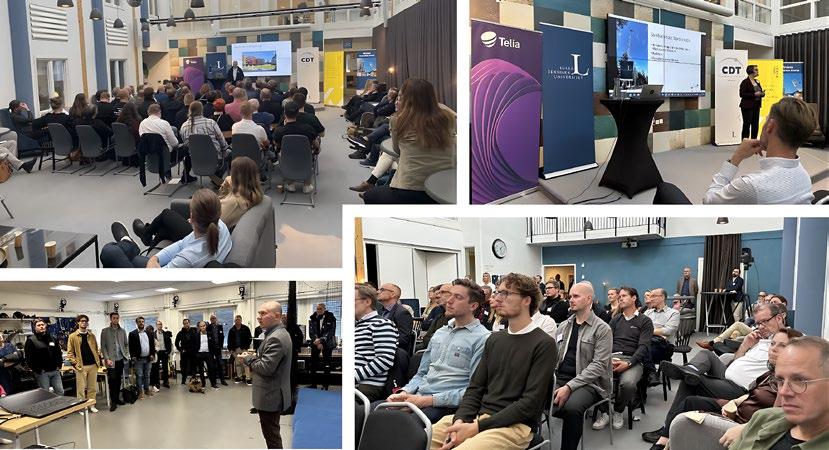
On 28 September, 115 participants, including leading industry experts, researchers and entrepreneurs, met in Luleå for a day of collaboration exploring the possibilities for future digital infrastructure and industry. The event was jointly organised by Luleå Science Park, Luleå University of Technology and Telia to highlight the important role that digital infrastructure plays in the green transformation in northern Sweden.
Companies and organisations that are central to the societal transformation in Northern Sweden actively participated in the event. Partners such as LKAB, Telia, Luleå Business Region, Luleå Municipality, RISE, Ericsson and many others contributed to a dynamic day.
The presentations covered a wide range of topics, including digital transformation in the mining industry, sustainability strategies and the groundbreaking work H2 Green Steel is doing in steel production. ThingWave, an innovative spinoff company from Luleå University of Technology, also shared its expertise.
Participants also gained insights into projects in areas such as community towers for mobile coverage, music generation with 5G and how smart
grids can optimise energy supply. Another project presented during the day was “Green Transition North,” which focused on research and innovation in circular business models and energy storage.
- Digitalisation is a powerful driver for increasing productivity and creating more sustainable business processes and models. Connected devices and 5G open up opportunities, for example in safe and efficient mining, says Karl Andersson, professor and dean at Luleå University of Technology.
The event ended with impressive technology demonstrations in the Robotics Lab at Luleå University of Technology, including 5G, artificial intelligence and robotics.
The day provided valuable insights into
sustainability, digitalisation and innovation in different sectors. It also confirmed the central role of northern Sweden in the green transformation and the opportunities created by the ongoing digital transformation. The organisers, Luleå University of Technology, Telia and Luleå Science Park, received positive feedback and look forward to future collaboration opportunities that can drive the green transformation.
Sara Json Lindmark, Operations Manager at Luleå Science Park, sums it up well:
- Together we need to build a strong social infrastructure for how we innovate and create smart solutions in practise that leverage the digital transformation of the new industrialisation.
For half a day, companies, researchers and other stakeholders gathered to be inspired at the annual Gender Contact Point Day. This year’s theme was “Gender Equality Culture as a Competitive Advantage”.
Participants heard presentations from one of Sweden’s most gender-equal companies, the Innovator of the Year and one of our most famous hockey players of all time. Topics covered were how to challenge gender roles in the beer industry, how to promote insider leadership and effective self-leadership, and how to avoid unconsciously exclusionary statements.
The presentation by Niklas Karvonen, Chief Technology Officer at Substorm, and Karin Sjöö Åkeblom, CEO at Tromb, discussed the possibility of creating inclusive communication using AI. They highlighted how wording in job advertisements can influence who feels approached and interested in a certain job, and how unconsciously exclusionary expressions in recruitment campaigns can cause some people to refrain from applying. They also presented the NoBias project, which explored norms and biases around communication in technology-related industries and fields using design and AI. They discussed different strategies to avoid exclusionary language and how AI can be used as a tool for more inclusive communication.
Another much appreciated speaker was Maria Rooth, Olympic gold medallist in ice hockey. Maria spoke about self-leadership and how to take control of your own life. Her talk was about understanding what drives us and how we can determine our own goals and priorities. In her talk, she emphasised the importance of creating an inclusive culture where all players, regardless of gender, feel welcome and respected.
Two other speakers were Katharina Frank and Linn Wallo from Luleå Energi. They spoke about the company’s work on inclusion and developing a culture
that promotes “insiderism’. They also shared how the company managed to be ranked as the third most equal workplace in Sweden by Nyckeltalsinstitutet.
The last speaker was Sofie Zätterqvist, who was named Innovator of the Year 2022 by Luleå University of Technology for her dissertation that uses non-alcoholic beer to raise questions about gender and equality. What started with an ex-job as a graphic designer evolved into a concept for a microbrewery called Don’t be an asshole brewery. With the help of non-alcoholic beer and clever graphic design, Sofie Zätterqvist works with equality issues. For Mattias Bergström, co-owner of Bottenvikens Bryggeri, working with beer as an equal product is a given. They want to get away from the fact that beer is a stereotypical male product.
Jonna Barsk from SSAB was very pleased with the event and expressed that all participants were able to take away at least one nugget from each presentation. She also said that they felt empowered and inspired after the day and that she and her colleagues had made new contacts.
The conference was co-organised by Gender Contact Point, Applied AI DIH North, 5G for healthcare in North Sweden, Arctic 6G, Datacenter Innovation Region, Dataföreningen i Sverige, DigiBy, DIT4BEARs, Gender Smart Arena, NoBias, RISE, SMALL, SSiO, TRE-m, Wireless Innovation Arena, VISA/5G, Let’s Create Music, RörLa, Digital City Development, 5G Edge Innovations for Mining and #Fulltäckning. The event was co-financed by the European Regional Development Fund.




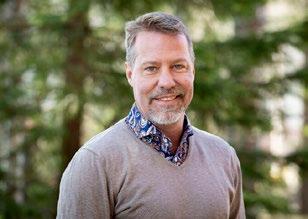


In January 2023, Vetenskapens hus in Luleå hosted the AI Day, an event on artificial intelligence. One of the prominent speakers at the event was Marcus Liwicki, a professor at Luleå University of Technology. He highlighted the remarkable advances in AI, noting that in the past AI could simulate the intelligence level of a five-year-old, whereas now it has risen to the level of a ten-year-old child.
The AI Day was organised in cooperation between Applied AI DIH North, Luleå University of Technology, Norrbotten Region, Luleå Municipality and Skellefteå Municipality. The event revolved around the latest developments in artificial intelligence and included applications, experiences, business models, future predictions and collaboration between universities and companies in northern Sweden.
One of the highlights of the event was the session entitled “The technologies that enable”,” led by Marcus Liwicki. He discussed how AI enables technical systems to perceive their environment, manage what they perceive and solve problems to achieve specific goals. Machine learning, a key aspect of AI, was the focus of his presentation.
AI systems can adapt their behaviour by analysing the consequences of previous actions, with the aim of enabling machines to understand the world in a similar way to humans. Access to rich and diverse data is essential
to the success of AI, as insufficient data can lead to incorrect conclusions. Michael Nilsson, project manager at CDT, gave an example of how AI could help alarm operators and highlighted the potential for robots to play a more important role, especially in an ageing population.
The next steps for the AI community are to democratise AI and make it accessible to a wider audience. Marcus Liwicki emphasised the goal of using AI to simplify life for everyone, not just large companies with vast resources. The potential of AI to solve complex problems and tackle repetitive tasks in different industries was also discussed.
The day was met with an overwhelmingly positive response. The audience at the event ranged from small businesses to established IT experts and large industry groups. Understanding the business models and return on investment of AI was seen as crucial for companies adopting AI, especially in the context of the green transition.

Luleå University of Technology has started a collaboration with companies such as Hitachi Energy, Vattenfall, Ericsson, Telia, Metrum and IETV. The aim is to research and demonstrate how 5G technology can be used to increase the operational security of critical infrastructure.
By using technologies such as 5G and automation, it is hoped to simplify the construction and maintenance of power systems and create smart grids that are more flexible and adaptable. Smart grids can optimise the distribution of electricity, reduce the risk of interruptions and support a higher share of renewable energy, which is crucial for a more sustainable energy transition and future.
“We will combine the latest from IT, telecommunications and the energy sector with groundbreaking research. The collaboration is an important step in developing new application areas for 5G technology and strengthens Sweden’s position on a global level,” says Karl Andersson, Professor of Pervasive and Mobile Computing at Luleå University of Technology.
Peter de Bruin, a senior researcher at Ericsson and one of the parties to the project, emphasises the benefits of 5G networks:
“With 5G comes the opportunity to create local solutions for secure and fast data transmission. 5G offers high security, high reliability and low latency, enabling a completely new environment for application development in local clouds or clouds at the edge of the communication network”.
Math Bollen, professor of electrical power engineering at Luleå University of Technology, is involved in the project.
“We are now planning the experimental work, which will first take place in Luleå at Luleå University of Technology and then be moved to Älvkarleby in Vattenfall’s newly established 5G test environment, which Telia has built with technology from Ericsson,” says Math Bollen.
The initiative for more reliability in critical infrastructure is taking place within the VISA/5G project, Vendor Independent Substation Automation over 5G. Substations in particular are critical to the distribution of electricity and are an important part of the power grid. With the help of 5G and automation, substations can be monitored and controlled more efficiently. You can collect data in real time from different parts of the power grid and optimise operations. This way, you can quickly identify and solve problems, which increases operational reliability and reduces the risk of interruptions.
Vinnova is the main financier and the project has a budget of SEK 14.8 million. For more information, visit www.visa5g.se

Luleå University of Technology and the development company BD Pop have started a collaboration with the aim of creating a virtual studio where musicians can produce music without geographical restrictions.


“The development will be cross-border and location-independent between the music and games industry, academia and business developers,” says Michael Nilsson, project manager at Luleå University of Technology.
´The project is being carried out as part of Let’s Create Music, a cross-sector innovation project at Luleå University of Technology.
“We see the need for an arena where music creators can work with creating music regardless of their geographical location,” says Pär Soini, CEO of BD Pop.
BD Pop is a Norrbotten founded music development company with a mission to support regional artists and music productions. The Norrbotten Region and the municipalities of Boden, Jokkmokk, Luleå, Pajala, Piteå, Älvsbyn, Överkalix and Övertorneå are co-owners of BD Pop.
The project is based on two preparatory studies in which the needs were investigated and technical obstacles were identified. One wish that came up was for a virtual studio that will develop the project together with the game industry.
A big problem with digital songwriting sessions is the delays in communication. But with 5G technology, opportunities are opening up for multiple musicians to make music at the same time with minimal delay. Part of the work will therefore be to conduct technology assessments and tests in the university’s 5G environments.
“We want to enable sustainable music creation and production regardless of geographical location,” says Annica Bray, project manager at Luleå University of Technology.
This means reducing the need to travel and facilitating collaboration with musicians around the world.
“We need to strengthen entrepreneurship and contribute to innovation-based businesses and sustainable growth within the industry. We will create a platform that offers a unique opportunity for music production, wirelessly and remotely,” Annica Bray continues.

Also involved in the project are Anna-Karin Gullberg, researcher in music education and Senior Lecturer in Education at Luleå University of Technology, and producer and songwriter David Lindgren Zacharias. He sees great opportunities in the project, which he believes can attract both national and international collaborations, including virtual meetings and master classes.
The work focuses on the creative process, where 5G through low latency allows musicians to work where they are most creative, without technical barriers. The University is providing the technical expertise and a range of 5G testing environments. BD Pop contributes with its knowledge of music production, creation and its network with songwriters.
The project is funded by the European Regional Development Fund, Region Norrbotten, Luleå Business Region, Skellefteå Municipality, and Sparbanken Nord.

In September, an important test of the 5G network’s ability to produce music in real time took place at Luleå University of Technology. It aimed to test the ability to produce music online in real time using the 5G test environment.

On the island of Storbrändön in the Luleå archipelago, a 45-metre-high mobile phone mast (in Swedish: Samhällsmast) has been erected, mainly financed by public authorities. The mast strengthens civil preparedness and improves safety, among other things for maritime traffic in the area. The mast provides better coverage and more capacity for mobile and broadband services for people in the archipelago.
“The mast improves availability for residents, visitors and businesses in the Luleå archipelago. For people in the archipelago, good mobile reception is crucial to be able to communicate with others. Luleå Municipality’s decision to co-finance the modern infrastructure and issue a building permit shows that they take the need seriously and prioritise investment in the archipelago,” says Annika Svensson, project manager at Luleå University of Technology and deputy coordinator of the Rural ICT Testbed – #fulltäckning.
Volume in Luleå harbour estimated to be four times higher
Luleå is a city dominated by maritime traffic and the Port of Luleå is the largest bulk port in Sweden. Overall, the port is the fifth largest port in the country. Thanks to the state-owned icebreakers and ice-breaking tugs, the navigation channel and the harbour are accessible even in winter. Every year, more than eight million tonnes of goods are shipped to and from the Port of Luleå. As a result of industrial expansions in northern Sweden, the volume is expected to quadruple. The mast on Storbrändön is crucial for the expansion of the port of Luleå. There are more than 1,000 islands in the Luleå archipelago, where there is a busy boating life and the possibility of renting cabins. Interest in visiting the archipelago is simply growing – and the ability to visit while having access to a well-functioning mobile network is becoming increasingly important.
A mast financed in whole or in part by the public can improve mobile coverage in a larger area where the commercial conditions to roll out a mobile network alone do not exist. It also allows several mobile operators to share the infrastructure. Publicly funded masts are tall lattice tower structures on which multiple operators can place their own antennas or share them with each other. In addition to the potential for better coverage, publicly funded masts are also important for improving transmission capacity in a geographical area. Increased capacity allows more people and connected technologies to use the mobile network at the same time without experiencing poor quality or slow connections. Improved and expanded network coverage in an area can, for example, lead to more people moving to the area and increased tourism
because more people are interested in and feel safe to visit the area and have access to communication services. In addition, the mast improves mobile communications at sea.
The publicly funded mast on Storbrändön is a partnership between several actors inside and outside the project #fulltäckning. The project partner MW Cyber as part of the MW group and Scanmast are responsible for the installation of the publicly funded mast on Storbrändön, as they are specialists in installations and connectivity in rough terrain.
The project has played an important role in enabling the construction of the publicly funded mast on Storbrändön, the first publicly funded mast of its kind in northern Sweden. The mast is located on the highest point of the island, called “Knöppeln”. The project is a partnership in Vinnova’s Challenge-driven Innovation, Level 3 programme, where around 30 partners are working together to improve network coverage and create opportunities for people living and working across the country. In areas where there will be no commercial mobile network roll-out, mobile coverage can be increased by building publicly funded masts, thus avoiding the exclusion of these areas from the digital society. The long-term goal of #fulltäckning is to create attractive and competitive rural areas that have access to mobile coverage.
“We are currently looking for other locations that might be interesting for similar installations. In the near future, the project will install more off-grid base stations along Kungsleden south of Abisko in the Swedish mountains,” says Annika Svensson.
The partners in the #fulltäckning project involved in the construction of the publicly funded mast on Storbrändön are: Luleå University of Technology, Luleå Municipality, Swedish Transport Agency, MW Cyber, Radio Innovation, Luleå Archipelago Association and Småskären Economic Association.
Other stakeholders involved in the construction of the publicly funded mast on Storbrändön are: The property owners Margareta Rönnqvist and Maria Öqvist, Storbrändön Marina and Road Association, Scanmast and Telia Towers.

Mobile coverage for rescue operations in sparsely populated areas is an important issue. Better coverage in extremely sparsely populated areas can mean the difference between life and death in an emergency.
Mobile coverage is an important part of our daily lives. We depend on being able to communicate digitally, no matter where we are. Although technological solutions have advanced significantly in recent years, there are still areas with a lack of mobile coverage. The challenges posed by the lack of mobile coverage are particularly great in extremely rural areas such as the mountains. This is not only a problem for private individuals, but also for important social functions such as emergency services and health care.
Stefan Fjällström, commissioner and business developer for the police mountain rescue service in northern Sweden, says that a lack of mobile phone coverage can be crucial in an emergency:
- Mountain rescue depends on good mobile communication. When private individuals are in the mountains and need help, it is important that they have access to functioning mobile communication. Then they can alert and cooperate with the rescue services quickly and efficiently in an emergency. If there is no reception, it can take longer for the emergency to be detected, which can have serious consequences.
The police are responsible for all rescue operations in the mountain area. To support them, there is the mountain rescue service, which relies on the work of volunteers who are trained and equipped by the police. The mountain rescuers help people who need emergency assistance in the mountains.
Stefan Källström continues:
- We have seen many examples of situations where the mobile phone did not work as it should, delaying or complicating rescue efforts. It also happens that our resources are called to people who are outside the coverage of mobile networks and where there has been no emergency at all, due to alarms from concerned relatives. A rescue mission costs about 150,000 SEK. So there is a lot to be gained by putting resources where they are really needed.
The police and other blue-light authorities use the Rakel network for their own communications in connection with operations. However, in the mountainous regions where Stefan and his colleagues work with rescue operations, the coverage of this network is also severely limited, making it difficult to coordinate and carry out rescue operations.
The topography of the mountains makes coverage with conventional mobile phone masts difficult. The Rural ICT Testbed - #fulltäckning project has therefore developed a solution with high-placed radio cabins. The project has implemented the solution in the mountains of Kiruna, where four radio cells cover parts of the Kungsleden south of Abisko, where they enable mobile communication and effective rescue operations.
So better mobile coverage and sufficient capacity in the networks is an important issue. This is also the impetus for the project, which is being carried out by Luleå University of Technology in cooperation with about thirty other private and public stakeholders. The project is actively working to improve mobile coverage and communication in rural areas.
Mobile communication infrastructure is not only important for the inhabitants of rural areas, but also for society as a whole. Better mobile phone coverage, for example, allows people to work remotely, which in turn can increase the number of people settling in rural areas. This is shown not least by the project’s experience with a community mast erected on an island in Strängnäs municipality. Better mobile phone coverage can also boost tourism in the region, which benefits local businesses and creates new jobs. Companies can also benefit by being able to do business in places where this was not possible before.
Johan Jobér, co-founder of the Nätägarna economic association, which has been a strong advocate for the establishment of a hotspot network south of Abisko, points out that the network is important for the economy in the region:
- The hotspot network that the #fulltäckning project has built not only creates opportunities and more security for individuals, but also for businesses. Besides the obvious advantage of being able to communicate with mobile coverage, emergency calls, digital payments and access to other community services - which are now taken for granted - are also made possible, both privately and for business.
Annika Svensson, project manager at Luleå University of Technology and active in the #fulltäckning project, says:
- We are pleased that the project was able to contribute to improved mobile coverage and are happy to help find more places where mobile coverage needs to be improved.

Our collaboration with LTU’s research groups remains a very important component of our work. Today, we collaborate actively with several different areas of research.
Architecture
The research team sees architecture, design, economic, practical and functional design integrated with the aesthetic harmonious and symbolic dimensions. It also includes what architecture means for the relationship between people, nature, history and built environment in the various levels of society.
CONTACT:
Agatino Rizzo, Chaired Professor agatino.rizzo@ltu.se +46 (0)920 493438
Automatic control
Automatic control is “the science of automated systems”. Simply put, automatic control theory is about to control systems so that they behave as desired.
CONTACT:
Dina Shona Laila, Professor dina.shona.laila@ltu.se +46 (0)920 493448
Construction Management and Building Technology
Technical solutions, tools, methods and organizing for the planning, information management and control of sustainable and integrated industrialized construction and business processes.
CONTACT:
Lars Stehn, Chaired Professor Lars.Stehn@ltu.se +46 (0)920 491976
Cyber-Physical Systems
Focus is on fully integrated software and application architectures with implementations of highly distributed embedded systems. The systems interact with each other and their surroundings to enable secure, goal-oriented, autonomous and developable solutions.
CONTACT:
Jerker Delsing, Chaired Professor jerker.delsing@ltu.se +46 (0)920 491898
Dependable Communication and Computation Systems
The research subject focus on cyber physical systems and Internet of Things, simulation of complex distributed systems, agent-based architectures and bio inspired control in complex industrial infrastructures, among other things.
CONTACT:
Valeriy Vyatkin, Chaired Professor valeriy.vyatkin@ltu.se +46 (0)920 492505
Design research is conducted within, among other things, engineering technology and development of methods used with modern design technology, multidisciplinary collaboration in design, cultural aspects of global design and ergonomics and design.
CONTACT:
Åsa Wikberg Nilsson, Chaired Professor Asa.Wikberg-Nilsson@ltu.se
+46 (0)920 491342
Electric Power Engineering
Electric power engineering covers studies of sustainable systems for production of electrical energy, transport of electrical energy and the interaction between the power grid, electricity production and electricity consumption.
CONTACT:
Math Bollen, Chaired Professor math.bollen@ltu.se
+46 (0)910 585713
Electronic Systems
The research subject includes electronic design, measurement technology and electromagnetic compatibility for control, monitoring and instrumentation of technical processes and systems.
CONTACT :
Jonas Ekman, Chaired Professor Jonas.Ekman@ltu.se
+46 (0)920 492828
Energy Engineering
Energy engineering concerns the development of technologies and processes in order to build a sustainable energy supply.
CONTACT:
Marcus Öhman, Chaired Professor marcus.ohman@ltu.se
+46 (0)920-491977
Entrepreneurship and Innovation
The subject deals with development of firms and organizations with a specific focus on business development based on innovative products and services, production solutions or ways to lead and organize activities.
CONTACT:
Vinit Parida, Chaired Professor vinit.parida@ltu.se
+46 (0)920-492469
Focus is on flow through porous media, multiphase flow, flow with free surfaces and in-stationary flow.
CONTACT:
Staffan Lundström, Chaired Professor staffan.lundstrom@ltu.se
+46 (0)920 492392
Human Work Science
The research group Human Work Science is part of the Division Humans and Technology. Since 1974, we have conducted research and education within human work science in both technical and social science sectors.
CONTACT:
Lena Abrahamsson, Chaired Professor lena.abrahamsson@ltu.se
+46 (0)920 492107
Industrial Marketing
Industrial Marketing involves activities and processes for creating, communicating, and delivering value to customers and other stakeholders. This includes marketing of goods, services, and information between organizations and their customers. Marketing across international borders and in digital channels are areas of particular importance for the subject, as well as services marketing, tourism, and branding.
CONTACT:
Maria Ek Styvén, Chaired Professor Maria.Styven@ltu.se
+46 (0)920 491501
Information Systems
Information Systems covers design and use of information technology in relation to people, organizations and societies.
CONTACT:
Ahmed Elragal, Professor ahmed.elragal@ltu.se
+46 (0)920-493670
Machine Elements
Machine Elements comprises the analysis and optimization of machine components and component systems in order to enhance performance, longevity, energy-efficiency, reliability and sustainability.
CONTACT:
Roland Larsson, Chaired Professor Roland.Larsson@ltu.se
+46 (0)920 491325
Machine Learning
The Machine Learning group targets fundamental and application-oriented research in Machine Learning and Artificial Intelligence, including deep learning, pattern recognition, and human computer interaction; with applications in digital humanities, education, document analysis, and Industry 4.0.
CONTACT:
Marcus Liwicki, Chaired Professor marcus.liwicki@ltu.se
+46 (0)920 491006
Pervasive and Mobile Computing
Pervasive and mobile computing address distributed systems and mobile networks, which enable mobility, ubiquity and interactivity of computers, data, software and users.
CONTACT:
Christer Åhlund, Chaired Professor chister.ahlund@ltu.se
+46 (0)910 585331
Robotics and AI
The Robotics team is world class when it comes to Robotics and specifically drone technology. As part of NASA’s team in the Subterranean Challenge, they successfully came in second place in the world in the first circuit of the prestigious competition
CONTACT:
George Nikolakopoulos, Chaired Professor george.nikolakopoulos@ltu.se +46 (0)920 491298
Luleå University of Technology established Sweden’s first professor’s chair in Signal Processing in 1988. Current research areas are flexible radio communications and signal processing methods in measurement technology applications.
CONTACT: Jaap van de Beek, Chaired Professor jaap.vandeBeek@ltu.se +46 (0)920 493383

Our aim is to identify highly innovative and novel research findings with technical and commercial potential. We also need to export these ideas to society and companies by creating sustainable business innovation.
Moreover, our research groups at Luleå University of Technology is a key asset of our activities. To secure continuous world class innovations, academic achievements are of great importance to us. Consequently, we measure the number of publications, reports, Doctoral degrees as well as how many Licentiate degrees that were awarded each year.
Professors/
Associate Professors
Anita Mirijamdotter
Anna Ståhlbröst
Birgitta Bergvall-Kåreborn
Dick Schefström
James P LeBlanc
Jeaneth Johansson
Karl Andersson
Kåre Synnes
Malin Malmström
Mari Runardotter
Mikael Wiberg
Olov Schelen
Peter Parnes
Wolfgang Birk
Åsa Wikberg Nilsson
Doctors
Abdolrasoul Habibipour
Ahmed Afif Monrat
Ali Padyab
Anders Lindgren
Anna Ståhlbröst
Anton Koval
Aya Rizk
Björn Lindqvist
Dan Johansson
Daniel Granlund
Dick Schefström
Eva Källhammer
Frank Sjöberg
Jan-Jaap van de Beek
Jeremiah Scholl
Jil Sutaria
Johan Karlsson
Johan Kristiansson
John Lindström
Josef Hallberg
Juwel Rana
Kazi Main Uddin Ahmed
Kåre Synnes
Lara Lorna Jimenez
Lars-Åke Larzon
Malin Malmström
Marita Holst
Mikael Degermark
Mikael Drugge
Mikael Sundström
Niklas Karvonen
Olov Schelén
Oluwatosin Adewumi
Per Ödling
Peter Parnes
Raihan Ul Islam
Roland Hostettler
Roland Parviainen
Thomas Pederson
Ulf Bodin
Yulia Berezovskaya
Licentiates
Ahmed Afif Monrat
Ali Padyab
Anders Lindgren
Andreas Jonsson
Andreas Papadimitriou
Anna Ståhlbröst
Dan Johansson
Daniel Granlund
Emad Ibrahim
Frank Sjöberg
Helena Oskarsson
Jeremiah Scholl
Johan Karlsson
Johan Kristiansson
Johan Nykvist
Josef Hallberg
Josefin Lassinantti
Karl Löwenmark
Kåre Synnes
Lars-Åke Larzon
Laurynas Riliskis
Lena Palmqvist
Marcus Nilsson
Martin Sehlstedt
Mats Folke
Matthias Wahlqvist
Mikael Drugge
Morteza Alizadeh
Nosheen Abid
Oluwatosin Adewumi
Pierre Fransson
Prakash Chandra Chhipa
Raihan Ul Islam
Richa Upadhyay
Richard Nilsson
Robert Granlund
Roland Parviainen
Stefan Elf
Tomas Nilsson
Ulf Bodin
Ulrika Wiss

CDT supports and finances the commercialization process of research innovations. A powerful way to do this is the generation of commercial spin-off companies. Since start, CDT has been involved in the forming of many spin-off companies based on academic research from Luleå University of Technology. The creation of these companies is beneficial to local economic development in the region.
Actegra – A design, product development and manufacturing company of electronic equipment for wireless communications and positioning. The concept behind the company arose in year 2009. In 2011, the collaborations with the CDT project “Sense Smart City”, was one of the factors that led to that the company expanded its activities and registered as a limited liability company. www.actegra.se
iGW – A company focusing on a developing infrastructure for collection, management and visualization of large amounts of data. www.igw.se
Oricane AB – The target customers of the company are vendors of software based network equipment, such as routers and firewalls, as well as vendors of custom hardware classification engines for high-end network equipment, 2006. www.oricane.se
Parnes Labs – Realizes dreams in the realm of development for the Web, Android, iPhone/iPad and just about anything related to the Internet! www.parnes.com/labs
Adela Innovation AB – A company developing products and services within area of enabling people to receive and listen to speech news-papers, 2008. www.adela.nu
Rubico AB – A company targeting the Swedish market for digital audio newspaper receivers/recorders, 2004. www.rubico.se
Operax AB – Operax develops key technology for data and telecommunication over Internet and Intranet within fixed and mobile systems, 2000.www.operax.com
Marratech AB – An Internet company developing products and services, which facilitate meetings between people on Internet, so called e-meetings, 1998. Bought by Google 2008, now a part of Google toolbox. www.marratech.com
Effnet AB – A developer of Internet Protocol (IP) header compression technologies, 1997. www.effnet.com
IT Norrbotten AB – A regional development company with the objective to create economic growth and develop work and industry in Norrbotten, 1996. www.itnorrbotten.se
Bollen Labs – A company that experiment with new ways to interact with computers, and new types of data visualization. www.bollenlabs.com
Skylite Affärsutveckling AB - The company offers qualitative services in digital business development, with expertise in project management, collaboration development, Business Intelligence and Artificial Intelligence. www.skylite.se
Team Tools Sweden AB - A company that develops simple and effective digital services for managing financial flows, administration and incomegenerating activities in associations. www.teamtools.se

Karl Andersson, CDT, LTU, won Vinnova’s Ambassador of the Year Award for Advanced Digitalisation 2023.
Infra Awards
The project Predictive Movement won second place in Infra Awards in 2021.
Winner: Datatadriven innovation
The project Predictive Movement won “Sveriges paketombud” and their data driven innovation challenge in 2020.
CDT’s project manager Annika Svensson was named by the organization Infrastructure Masons as one of the 100 most important people who have contributed to the industry in 2020.
Finalist: Challengegov
The project Predictive Movement was finalist in the Challengegov competition in 2020.
New entrepreneur of the year
Partner company Team Tools won “New entrepreneur of the year” at the Boden Business gala in 2020.
Best Impact Maker
Team Pay was awarded best Impact Maker in the Venture Cup Regional Final in Start-up, Region North 2019.
Norrbotten’s Equality Award
NOMINATION
Paula Wennberg at CDT was nominated to Norrbotten’s Equality Award 2019.
Norrbotten’s Equality Award
NOMINATION
Paula Wennberg at CDT was nominated to Norrbotten’s Equality Award 2016.
Young Researcher Prize
Awarded Associate Senior Lecturer Damiano Varagnolo, Luleå University of Technology in 2015 from Norrbottens Forskningsråd.
Best Exhibitor
Awarded the CDT project USEMP during the ICT Days 2015 in Lisbon.
of the year
The CDT spin-off company KYAB receive the award “Spin-off of the year 2013” from the Luleå University of Technology.
Ericsson Patentable Invention Award
Award received by Ph D student Juwel Rana, LTU, Associate Professor Kåre Synnes, LTU and Stefan Håkansson and Johan Kristiansson at Ericsson in 2012, Sweden.
Best Student Paper Award
The International Conference on Social Computing and its Applications awarded Juwel Rana, Kåre Synnes and Johan Kristiansson “Best Student Paper Award”, in November 2012, in Xiangtan, China.
IT Personality of the Year
Dataföreningen i Norr, awarded Professor Christer Åhlund “IT personality of the year 2012”, in Skellefteå, Sweden.
Best Idea
Awarded the research project Sense Smart City at the European summit on the future of Internet in Luxembourg, 2011.
IT Organization of the Year
Awarded CDT in year 2011 from the IT society in Norrbotten, Sweden.
Chester Carlson Prize NOMINATION
Finalist Mikael Sundström in 2009 by IVA for efficient compression, storage and retrieval of information.
Best Paper NOMINATION
Awarded Bigitta Bergvall-Kåreborn, Marita Holst and Anna Ståhlbröst for “Concept Design with a Living Lab Approach at HICSS-42 at Big Island, Hawaii, in 2009.
SBAPA Award
Received by Kimmo Yliniemi (KYAB) in 2008.
Mobile Technology of the Year 2008
GULDMOBILEN
Awarded Oricane in 2008.
The Competence Gala´s Great Honorary Prize
Shared by Östen Mäkitalo and Anton Abele in 2008.
European Grand Ict Prize FINALIST
Awarded Operax AB in year 2007 by the European Commission.
Best Presentation Award
Awarded Mikael Sundström at ItechPartner Forum in Porto, Portugal, in 2007.
Best Paper
Awarded Christer Åhlund, Robert Brännström, Karl Andersson, and Örjan Tjernström for ”Multimedia Flow Mobility in Heterogeneous Networks Using Multihomed Mobile IPv6” at The 4th International Conference on Advances in Mobile Computing and Multimedia in Yogyakarta, Indonesia, in 2006.
Best New-Establishment In Luleå Rubico AB, a CDT-offspring, awarded for the best new establishment in Luleå in 2006.
Competitive Regions Best Practice 3 VITAL Project selected for presentation in Magdeburg, Germany, 2005.
Best Student Paper
Awarded Anna Hedman, David Carr, Hans Nässla in year 2004 for “Browsing thumbnails: A comparison of three techniques” by ITI2004 in Croatia.
Ericsson Inventor of the Year
Awarded Krister Svanbro at Ericsson in year 2001 for Header compression by Ericsson.
No 1 Swedish Research Project
Awarded Rocco project in 2000 by magazine Ny Teknik.
No 1 Swedish Researcher
“Chester Carlson Prize”
Awarded Mikael Degermark in year 2000 for “high performance routing” by IVA.
European Grand IST Prize FINALIST
Awarded Marratech AB in year 2000 in Nice by the European Commission.
Best Paper
Awarded Mikael Degermark in year 2000 for “high performance routing” by ACM/SIGCOM.
European Grand IST Prize (1st)
Awarded Effnet AB in year 1999 in Helsinki by the European Commission.
1st Prize In Swedish Innovation Cup 1998: Brodnik/Carlsson/Degermark/Pink – The Luleå Algorithm

CDT is mainly financed by institutional sources, both nationally and internationally. This is for example EU framework programs and structural funds, along with national and regional governments.
CDT is a non profit organization. Nonetheless, a strong financial position helps us achieve our goals by being able to better support the projects we are involved in.


CDT offers an integrated environment for efficient cross-border collaboration between universities, commercial companies, governments and end users.
Our partners come from different organizations and working cultures, located at different geographical sites. CDT’s goal is to be a preferred R&D partner and meeting place. We have for several years invested in building long-term alliances with
selected national and international scientific communities as well as business partners.
Today, we consider our network one of our strongest assets, including many companies, organizations and research centres.
Ericsson
Luleå University of Technology
Skellefteå Municipality
COMPANIES
Swedish SMEs
3eflow
5 Addven
Agio
Arctic Med Tech
Arctic Space Technologies
Arctos Labs
Barrage Nordx
Behavioural Informatics
BI Nordic
BiTi Innovations
Brain Stimulation
Bnearit
Compodium
Conifer
Curest
DataDuctus
Earhart
Ecoloop
Effnet
Elastisys
Exercite
Flasheye
Ecodatacener
Gassecry
Grepit
Grönbo
Handla.io
Hydro66
IETV
Insightgap Psychology
Iteams Solutions
Jump Onboard
Lumire
Mindforce Game Lab
Mirror
Mobilaris
Softhouse
Nextree
Noah International
Nuiteq
ONar
Once Upon
Optimation
Orbigo
Peckas Tomater
Photon Sports
Predge
QT Systems
Raytelligence
Remos Space Systems
Senseworks
Service Node
Skylite
Skyresponse
Smart Recycling
Substorm
Susanns livs AB
Svenska Ljud
Team Tools
Tooltech Töre
The Fit
ThingWave
TnTX
Tuxodyne
Unlimited technologies
WDO
Winterkvist Design AB
Xarepo
Swedish Industry
ABB
AFRY
Bodens Energi
Boliden
H2 Green Steel
Hexatronic Cables & Interconnect
Hitachi Energi
InfoVista
LKAB
Luleå Energi
Lumire
NodePole
Northvolt
Nordlo Elevate
Pite Energi
Radio Innovation
Scanmast
Skellefteå Kraft
Swebio
SWECO
SWERIM
Telia
Telia Towers
Tieto
Vattenfall
Öviks Energi
International companies
Datariver, Modena Italy
Funlus Oy, Finland
Frontida Zois, Greece
Hellenic
Telecommunications, Greece
Italtel, Italy
Pikei New Technologies, Greece
Re:Lab SRL, Italy
SAMMY PC, Greece
Uniper
PUBLIC SECTOR
North Sweden municipalities
Boden
Luleå
Piteå
Älvsbyn
Övertorneå
Dorotea
Lycksele
Norsjö
Skellefteå
Storuman
Umeå
Ljusdal
Västerviks kommun
Kalmar Län
Dalarnas län
Other
Municipality of Egaleo, Greece
Region of Western Greece
Council of Oulu Region, Finland
NON-PROFIT
ORGANISATIONS
ABI - Arctic Business
Incubator
Brainport Development
Boden Business Agency
Business Sweden
Cluster Health, EmiliaRomagna, Italy
Clust-ER Innovate, Emilia-Romagna, Italy
Cluster SCC, Lombardia, Italy
iMEC
Infrastructure Masons
IT Norrbotten
IT-branschrådet Luleå
IUC Norr
Luleå Business Region
LTU Business
Luleå Science park
Skellefteå Science City
Skellefteå Digital
Alliance
Sveriges paketombud
SDIA - Swedish
Datacenter Industry
Association
Uminova
BD-pop
Unboxx
Luleå skärgårdsförening
Småskärens intresseförening
Laevas sameby
Polismyndigheten
Trafikverket
Insamlingsstiftelsen för
totalförsvarsstudier
Skogforsk
Statens
Veterinärmedicinska
Anstalt (SVA)
Totalförsvarets
Forskningsinstitut (FOI)
Frivilliga flygkåren
Samarkand2015
UNIVERSITIES AND RESEARCH INSTITUTES
Lapin University of Applied Sciences
Lunds universitet
Oulu University RISE
UiT The Arctic University of Norway
Umeå universitet
Sveriges
Lantbruksuniversitet SLU
University of Patras
Savonia University of Applied Sciences
PROJECT SPONSORS
Horizon Europe
I3-programmet
Vinnova
The Swedish Agency for Economic and Regional Growth, ERUF
Interreg Aurora FORMAS
The Swedish Energy Agency Kolarctic Region Norrbotten
Region Västerbotten
Norrbotten Chamber of Commerce
Västerbotten Chamber of Commerce
Bodens Municipality
Boden Development
Luleå Municipality
Luleå Business Region
Lycksele Municipality
Sorsele Municipality
Åre Municipality
Vilhelmina Municipality
Norsjö Municipality
Piteå Municipality
Skellefteå Kraft
Storuman Municipality
Umeå Municipality
Älvsbyns Municipality
Övertorneå Municipality
Elastisys
NodePole
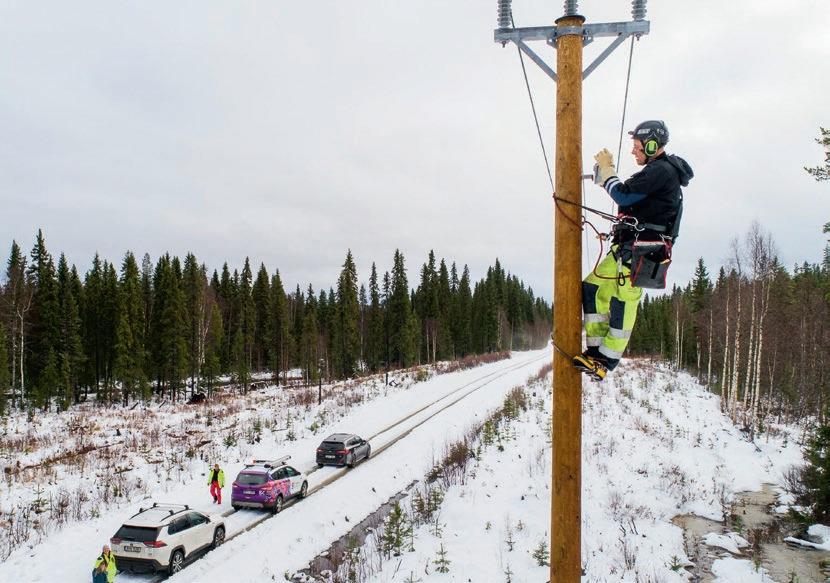
One of CDT’s main tasks is to initiate and coordinate innovation projects. In most of our projects, research from Luleå University of Technology is combined with real-world applications. During a project, important resources are created, such as architectures, new technologies, methods and models. If the projects prove to be very successful, the results can lead to innovations in the form of products, services, prototypes or business concepts.

The project AMBITIOUS aims to advance the state of the art in AI, 5G and IoT and to promote interregional collaboration and commercialisation.
It demonstrates its solutions through five use cases based on existing 5G testbeds in Sweden, Finland (Oulu and Kuopio) and Greece. By providing funding, testbeds and support, the project enables SMEs to compete globally, improve security measures, minimise energy waste and improve their innovation pathway to eventually integrate into EU value chains. The consortium consists of 10 SMEs, 1 large company, 1 region, 1 municipality, 4 universities and 1 research institute and includes both the demand and supply side. The main funder is the EU and the project is led by Luleå University of Technology and CDT.
www.ambitious-project.eu
PROJECT PERIOD: September 2023 - October 2026
CONTACT:
Karl Andersson
karl.andersson@ltu.se
+46 (0) 910-585 364

The project goal is to create a strong innovation system for growth in the AI industry, in Northern Sweden a Digital Innovation Hub as a base, in collaboration, research, innovation, applied test-driven development, education and clustering.
To achieve the project goal, the project has the following sub-goals:
- Create an innovation system that increases SME’s innovation speed with the help of AI
- Implementing demand-driven AI innovation pilots
- Strengthen research and education in AI
- Package a long-term regional functional innovation system
This will lead to strengthening the Upper Norrland region as Sweden’s leading region within Applied AI, which offers a productive and attractive innovation environment. This creates long-term sustainable growth that attracts people, investments and companies to the region. The main financier is the European regional development fund.
www.aidih.se
PROJECT PERIOD: January 2020 - February 2023
CONTACT:
Michael Nilsson
michael.nilsson@ltu.se
+46(0)70- 288 45 20

Arctic 6G
The main goal of the project is to develop, demonstrate and disseminate new technologies that will improve the societal resilience of future 6G networks in the Aurora region.
Key targeted outcomes include:
- Development of new quantitative tools to evaluate and measure inequality in cellular coverage
- Development of new, energy-efficient 6G technology for rural and remote areas, new IoT device location methods and improved network security features
- Develop understanding of Sapmi and reindeer herders’ connectivity needs
The project is financed by EU Interreg Aurora and Region Norrbotten, led by Luleå University of Technology and CDT with the partners Oulu University and LAPIN AMK.
www.arctic6g.se
PROJECT PERIOD: December 2022 - November 2025
CONTACT: Karl Andersson
karl.andersson@ltu.se
+46(0)70- 819 54 84


The Datacenter Innovation Region projectGrowth and Export is based on results from the previous project Datacenter Innovation Region.
The project supports SMEs in the data center industry with the aim of increasing their competitiveness through market adaptation of products, market communication and market presence. The project makes efforts through, for example, prototype development, research and expert support for technical development and innovation evaluation.
Examples of innovations that the project is working on are:
n A self-service portal for data centers
n Energy recovery of excess heat from data centers
n A mobile module for data centers
www.datacenterinnovationregion.se
PROJECT PERIOD: June 2020 – April 2023
CONTACT:
Jan-Olov Johansson
jan-olov.johansson@ltu.se
+46 (0) 70 619 22 31

The project’s main idea is to connect world-class research with innovative high-tech companies and the public sector and develop innovative and groundbreaking technical solutions for energy management systems with simulation tools and digital twins.
The goal is for energy efficiency measures, implementation of new loads, energy storage and local energy production to be handled in the simulation tool and the digital twin. The idea is that the solutions should be able to be used for the continued development of neighborhoods where lack of power is a limiting factor, where we adapt consumption within the local network to enable new properties or other loads to develop. As a case study, the Skellefteå campus has been selected.
The project is financed by VINNOVA, led by Luleå University of Technology and CDT with partners such as Skellefteå Municipality, Skellefteå Kraft and ABB.
https://digitalstadsutveckling.se
PROJECT PERIOD: August 2022 - July 2025
CONTACT: Karl Andersson karl.andersson@ltu.se +46(0)70- 819 54 84


DIT4BEARs stands for Disruptive IT for Barents Euro-Arctic Regions.
The project works with four different use cases in the areas of smart roads, smart ID blockchain applications, waste management and the prevention of collisions with reindeers on roads. Overall objective is to enhance adaption and transfer of Disruptive Information Technologies (IoT, Big Data and Distributed Ledger Technologies, and other) for the societal and economic needs of Barents Euro-Arctic Region. The project faces challenges, relevant to the field of transport, waste management system, movement of people and goods within the region and transport security connected to winter roads maintenance and reindeer husbandry.
www.dit4bears.org
PROJECT PERIOD: January 2020 - June 2023
CONTACT: Björn Backe +46 (0) 920 - 492111 bjorn.backe@ltu.se


Green Transition North
Green Transition North includes 13 subprojects aimed at smart energy systems and circular economy. The projects are carried out in close collaboration with industry within the green transition and with a focus on small and medium-sized companies in northern Sweden.
The goal is to focus on research, development and innovation within the region’s SMEs to make them even more competitive and relevant in the ongoing green societal transformation. The project involves the most important actors in the green transition and their need for knowledge to create businesses and products with high circularity, i.e. minimal use of non-renewable resources.
The project is a collaboration between researchers and 15 companies within the green industrial transition in northern Sweden. The project is led by Luleå University of Technology, CDT. Project partners are LTU Business, Boden’s development, IUC Norr and Skellefteå Science City. Financiers are the European Regional Development Fund, Region Norrbotten, Skellefteå Municipality, Luleå University of Technology and participating industrial companies.
www.greentransitionnorth.se
PROJECT PERIOD
April 2023 - March 2026
CONTACT :
Michael Nilsson
+46(0)70- 288 45 20 michael.nilsson@ltu.se

IFPS stands for Intelligent Food Production Systems.
The aim of the project is to, with the help of research in biological production and with expertise in AI and machine learning, develop a model of how residual heat from the next generation of steel production and from server halls in Boden, can enable a circular autonomous food system.
The project will explore opportunities for circular land-based food production within an artificial ecosystem that includes a closed cycle consisting of fish, insects, microalgae and vegetables.
Parties include Boden Business Agency, ONar AB, Boden Municipality, Tebrito. Main financier is FORMAS.
PROJECT PERIOD: December 2021 - November 2023
CONTACT:
Michael Nilsson
+46(0)70- 288 45 20
michael.nilsson@ltu.se

Secure information flows with a digital platform for trading in biofuels
The project will establish a digital platform for trading in solid biofuels that is used by a significant proportion of market participants.
This is the goal of the project funded by the Swedish Energy Agency, where CDT is one of several parties. In order for Sweden to be able to restructure the energy system and reach the target of zero net emissions by 2045, a significantly increased use of biofuels is necessary. Digitization of the biofuel market can contribute to an increased rate of change, but for digital commerce to be successful, safety aspects must be carefully investigated. This issue will be investigated by the project. It will also look at whether blockchains can be used to meet users' demands for safety, traceability and integrity in the digitalized trade in biofuels in Sweden.
PROJECT PERIOD: June 2020 – June 2023
CONTACT:
Michael Nilsson
michael.nilsson@ltu.se
+46(0)70- 288 45 20



The project will, among other things, develop new autonomous road maintenance concepts, recycling of batteries as well as testing and demonstration of liquid and gas fuels and biofuels from the region.
TRE-m is an ERDF-funded project with the Swedish Proving Ground Association (SPGA) as a beneficiary, where CDT is the project manager for one of the work packages.
The project will create growth in the industry, increased added value and sustainable adjustment through a deeper regional range of both research-related and market-related resources in tests and demos.
The goal for the project is to result in a structure for the development of the test cluster which has been proven to work by highlighting at least 10 new regional test offers linked to at least three regional test resources.
PROJECT PERIOD :
January 2020 - February 2023
CONTACT:
Björn Backe
+46 (0) 920-492111
bjorn.backe@ltu.se

The project aims to scale up industrial pilots in the area of wireless ICT.
Collaborating parties will join the forces to scale up vertical pilot cases into full-scale crossEuropean value chains and sustainable business cases, aiming to industrial pilots utilising fast, reliable, secure, and energy-efficient wireless ICT. Approach used to the prepared pilots is from bottom-up, listening carefully to the needs of the companies. Active participation of regional governments will ensure alignment between the business and the societal challenges thus making the value chains robust on a long-term perspective.
Thematic working areas are
• Health
• Future sustainable industry
• Autonomous vehicles
• Smart cities/regions
PROJECT PERIOD :
December 2022- November 2024
CONTACT:
Michael Nilsson
+46(0)70- 288 45 20 michael.nilsson@ltu.se

Wireless Innovation Arena focuses on the industry for wireless communication in North Sweden where organizations together with users create innovative services based on new technologies.
The project aims to create favourable conditions for small and medium-sized companies. Together with academia, institutes, large companies, the public sector and end-users, we will develop skills and competitive products and services. This will primarily be done in the area of wireless communication, specifically 5G, which is an important enabler for the internet of things to reach its full potential. An important part of the project is the 5G test environment, “5G Innovation Hub North”, at Luleå University of Technology, which is in collaboration with Telia. There, companies can easily perform different types of tests and experiments to validate new products and services.
www.wirelessinnovationarena.se
PROJECT PERIOD : January 2019 – October 2023
CONTACT:
Jan-Olov Johansson
jan-olov.johansson@ltu.se
+46 (0) 70 619 22 31

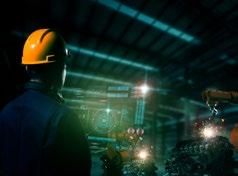
VISA/5G
VISA/5G stands for Vendor Independent
New
Substation Automation over 5G.
One of the biggest advantages of edge computing is the ability to run time-critical protection and control applications on-site. This combination of low latency and edge computing capabilities offered by 5G is very attractive for power grid protection and control. In this scenario, both centralised and distributed automation architectures are conceivable, and a vendorindependent approach can be explored.
This project, together with partners Hitachi Energy, IETV, Ericsson AB, Telia, Metrum and Luleå University of Technology (LTU), will demonstrate vendor-independent substation automation over 5G (VISA /5G) in two scenarios: LTU’s 5G testbed and edge computing cluster, and Vattenfall’s real substation.
Project partners are Vattenfall, Hitachi Energy, IETV, Metrum, Telia, Ericsson AB. The main financier is Vinnova.
www.visa5g.se
PROJECT PERIOD: January 2023 - December 2025
CONTACT: Björn Backe +46 (0) 920-492111 bjorn.backe@ltu.se

The overall goal of the project is to make North Sweden one of the natural innovation environments to develop and test solutions within 5G for healthcare.
The aim of the project is to strengthen the industry in North Sweden in the area of 5G Healthcare through new knowledge that has been added to small and medium-sized companies in a joint work on innovation. An important part of the project is to support the region’s SME with the aim of creating new innovations in the wireless communications industry.
Expected results are that new offers have been produced by participating SMEs based on activities within the project and that existing offers from participating SMEs reach markets outside the home region. In the long term, the project intends to have created new central meeting places and collaborative environments that live on and further develop after the project and have contributed to a more inclusive society. www.5gvo.se
PROJECT PERIOD: January 2020 - April 2023
CONTACT: Jan-Olov Johansson jan-olov.johansson@ltu.se
+46(0)706192231

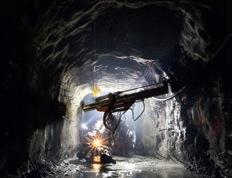
The project aims to create more intelligent mining systems that will further push the boundaries of autonomy, productivity and security.
The project will work with pilot demonstrations of 5G-connected drones in a mining environment, innovative use of modern AI technology and a hardware and software stack for edge-to-cloud applications. Examples of applications that will be developed include real-time video analysis, autonomous navigation, time-synchronized seismic sensors, augmented / virtual reality, etc.
The project is funded by VINNOVA, NextGenerationEU. It is led by Luleå University of Technology and CDT with parties such as RISE, BI Nordics, ThingWave and Softhouse
PROJECT PERIOD: November 2021 - November 2024
CONTACT: Karl Andersson karl.andersson@ltu.se
+46(0)70- 819 54 84


The Rural ICT Testbed project works to prevent digital exclusion by increasing mobile coverage in rural areas.
The project creates opportunities for people to live and work throughout the country. The long-term goal is to create attractive and competitive areas in rural areas with access to mobile coverage. www.fulltäckning.se
PROJECT PERIOD:
January 2021 - June 2024
CONTACT:
Karl Andersson
karl.andersson@ltu.se
+46(0)70- 819 54 84

The project will work to enable salable and sustainable music production regardless of geographical location.
A virtual music studio will be created and in a 5G testbed the project will work on reducing obstacles such as delay. Collaboration and creative processes will also be developed through research. The work will take place cross-border and location-independent between the music/games industry, academia and business developers.
Parties involved are BD Pop and Luleå University of Technology. Main financiers are the European Regional Development Fund, Region Norrbotten, Luleå Business Region, Skellefteå municipality and Sparbanken Nord.
PROJECT PERIOD
December 2022 - March 2026
CONTACT:
Michael Nilsson
+46(0)70- 288 45 20 michael.nilsson@ltu.se


Can you tell us a bit about your background?
Since 2013 I have been the Chair of Signal Processing at LTU, the same group where I did my PhD in the nineties. I came to Luleå from the Netherlands as part of an international student exchange programme to write my thesis. I could hardly imagine that 30 years later I would still be connected to LTU. From 1999 to 2013, I worked in the industry, at Nokia Networks and Huawei Technologies, where I mainly worked on the development and standardisation of mobile networks. I commute weekly between my family in Stockholm and my co-workers in Luleå.
Why did you accept the role as a board member?
The last part of my PhD was funded by early CDT projects and in close collaboration with Telia Research, which was based in Aurorum at the time. I look forward to helping many more PhD students benefit from CDT:s strong position at the intersection between technical research and industrial innovation.
My technical expertise lies in the areas of radio communication, cellular networks and signal processing. As I have many years of experience in both industrial and academic research, I know how different the driving forces in both research worlds can be. It will be exciting to help align these forces in the important technology areas targeted by CDT so that LTU’s research results will continue to have an impact on small and large companies in the region.
How do you see the future of the CDT? Is there a particular area that you consider important or in which you are particularly involved?
Distance-spanning technologies are more important than ever, and in a broader context today than in the 1990s. Social divides of various kinds are widening and I would say that ‘cross-distance-spanning technology’,
the original purpose of CDT, is therefore still very modern and relevant. In recent years I have been looking at the challenge of improving mobile coverage in rural areas, i.e. how to provide urban standard internet connectivity in areas where the market cannot find solutions. Technology (and other innovations) can help bridge such distances, but the challenges remain many and difficult. With its history, location and expertise, few centres are better equipped than CDT to meet these challenges.


Karl Andersson
Executive Director
karl.andersson@ltu.se
+46 (0)70 819 54 84

Michael Nilsson
michael.nilsson@ltu.se
+46 (0)70 288 45 20

Jan-Olov Johansson
jan-olov.johansson@.ltu.se
+46 (0)70 619 22 31

Marie Nolin marie.nolin @associated.ltu.se
+46 (0)72 526 20 70

Annika Svensson
annika.c.svensson @associated.ltu.se
+46(0)70 591 04 23

Björn Backe bjorn.backe@ltu.se
+46 (0)920 49 21 11
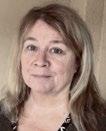
Annica Bray annica.bray@associated.ltu.se
+46 (0)70-600 18 06


Jan Pettersson jan.pettersson @associated.ltu.se
+46 (0)70 242 68 04
The CDT board of directors have approved the CDT annual report 2023. Luleå, March 2024.


Markus Andersson Ericsson Research Niklas Lehto Luleå University of Technology

Michael Carlberg Lax
Skellefteå Municipality

Ida Lind Skellefteå Municipality

Jaap Van De Beek Luleå University of Technology

Mats Nordberg Acting Chairman Ericsson Research
Luleå University of Technology, SE-971 87 Luleå. Phone: +46 (0)920 49 10 00. E-mail: cdtinfo@ltu.se, www.ltu.se/cdt CDT is a research center at Luleå University of Technology, www.ltu.se

